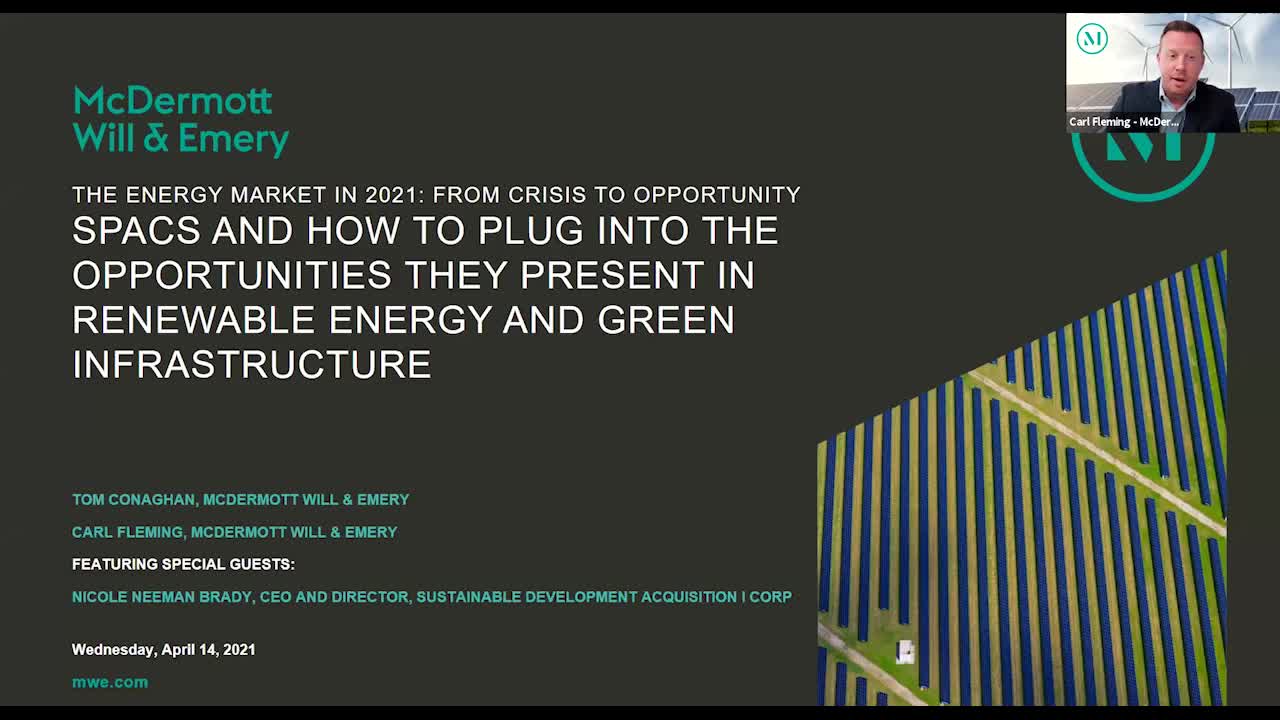On April 14, McDermott Will & Emery partners Tom Conaghan and Carl Fleming and Nicole Neeman Brady, CEO and director of the renewable energy SPAC, Sustainable Development Acquisition I Corp, discussed the rise of special purpose acquisition companies (SPACs), the opportunities they present in renewable energy and in the transition to green infrastructure and the complex legal and business challenges these vehicles present.

Below are key takeaways from the webinar:
- There has been an increase in SPAC activities in recent years, and this presents an opportunity for sponsors, investors and private companies. Each stakeholder has distinct advantages for entering into a SPAC transaction.
- Sponsors are able to take advantage of the industry experience they already have, including in the capital markets sector and the specific industry sector of the target company. Investors have downside protection with the money they invest, which may be refunded at a later date. Investors are also eligible to purchase warrants in connection with SPAC initial public offerings (IPOs), offering additional protection. Private companies are offered access to capital markets without having to undergo a traditional IPO, which is a burdensome process in complying with various regulations and underwriter requirements.
- Various SPACs consider different factors in making investments. Sustainable Development Acquisition I Corp, for example, looks for sustainability goals that balance profit and purpose as a B Corp. and prioritizes companies that have expertise and goals that are consistent with sustainable growth.
- Private companies that are hoping to do a SPAC transaction should prepare in advance to make sure it is ready to comply with public company laws and regulations. These rules are complex and will require long lead times before the company is in a position to be regulated as a public company. In particular, preparation of financial statements can be challenging to prepare. As there is an 18- to 24-month deadline for SPACs, private companies would benefit from getting a head start in preparation.
- The US Securities and Exchange Commission (SEC) has recently been more involved with IPOs conducted through SPACs, including publishing a primer on SPAC transactions and a statement on whether warrants should be treated as equity or liability for accounting purposes. In light of such recent developments from the SEC, all stakeholders should exercise more caution in performing SPAC transactions and avoid cutting corners.
To access past webinars in this series and to begin receiving Energy updates, including invitations to the webinar series, please click here.
read more

 Subscribe
Subscribe
